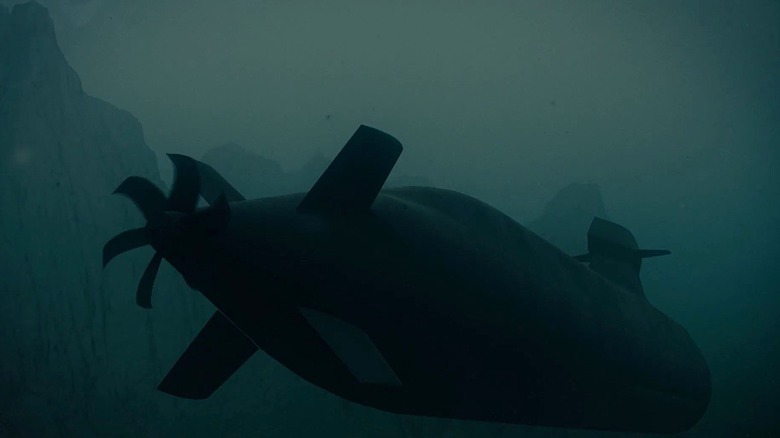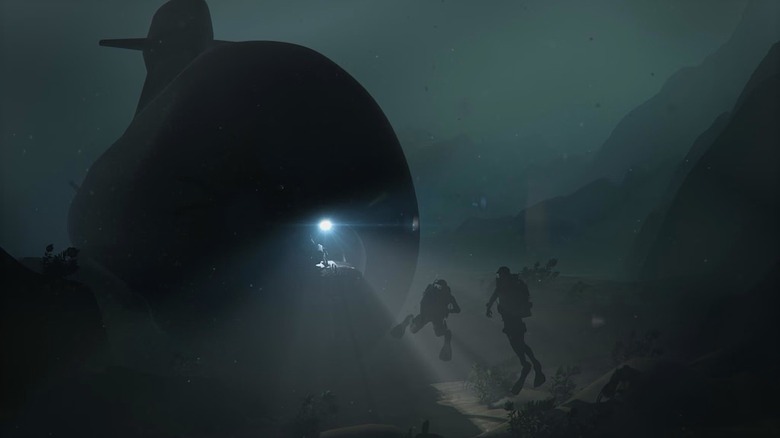Sweden Revealed The World's First 5th-Gen Submarine
The world's first "fifth-generation" battle submarine was unveiled by a Swedish defense manufacturer, Saab. If you're wondering what constitutes a next-generation, or fifth-gen submarine, you're not alone. According to Saab, it's because the new model, dubbed the Blekinge-class (A26) submarine, provides innovative capabilities that will "define the next era" in undersea vessels. Particularly, it offers next-gen designs, capabilities, availability and upgrades. Not only will it dominate the sea, but also the air and information domains thanks to its strong intelligence-gathering platform. It can also operate independently (autonomously) and in tandem with Saab's other ocean drones.
Designed and developed for the Swedish Navy while following NATO interoperability standards, the A26 will fight physical battles and virtual ones. Equipment and systems on board support intelligence, surveillance and reconnaissance (ISR) measures. In addition, it's equipped with weapons to handle long-range strikes with modular design options, Saab's SLWT full digital homing and wire-guided torpedoes, and seabed warfare opportunities. Above all, the A26 is meant to offer unprecedented stealth and low-signature features by minimizing most traditional signatures. When deep underwater, for example, it minimizes radiated noise, target echo strength, magnetic, hydrodynamic, and radar signatures.
The hull of the A26 is made of special steels that add to the sub's underwater durability. It's not titanium — a material unique to Russian subs – that offers extra stealth and durability. Yet, the stealth properties the A26 is said to offer are remarkable nonetheless.
What stealth capabilities does the fifth-gen A26 have?
In addition to being ultra-quiet and nearly invisible, thanks to a wide range of minimized signatures, Saab's Stirling Air-Independent Propulsion (AIP) system allows the submarine to remain underwater for several weeks at a time. Usually, diesel-electric subs must resurface after a few days, or break the surface with a snorkel, to replenish fresh atmospheric oxygen. But since AIP is "air independent," subs using it do not need to surface as often. Saab also says it's a more cost-effective technology versus other air-independent alternatives like fuel cells and nuclear power, because those are "highly complex and difficult to manage" and AIP is not.
Enhanced hull geometry, radar-absorbing coatings, shock resistance, and an electronic degaussing system provide extra stealth and protection. Meanwhile, the A26 can carry and deploy unmanned underwater vehicles (UUVs) for special operations, as well as divers — think special ops — from its modular bays. That alone introduces new opportunities for undersea and seabed warfare. The modular design also allows for retrofitting when "technological breakthroughs" are made, so it can be actively modified and improved with "enhanced stealth, navigation, combat, comms and ship control capabilities." Saab likens the modularity to past vessels, including the HMS Gotland and HMS Upland for Saab's Gotland-class submarine.
That said, there is a delay in production. Initial deliveries were planned for 2027 to 2028, but have been pushed back to 2031 and 2033. That's still an ambitious timeline. The U.S. Navy's next-gen sub isn't due to arrive until 2040. Although one of the world's most advanced nuclear-powered submarines completed its first U.S. test in 2025. Moreover, the new direction of warfare, land and sea, seems to be moving towards hybrid, efficient technologies like what's powering the next Abrams tank, and autonomous systems.

